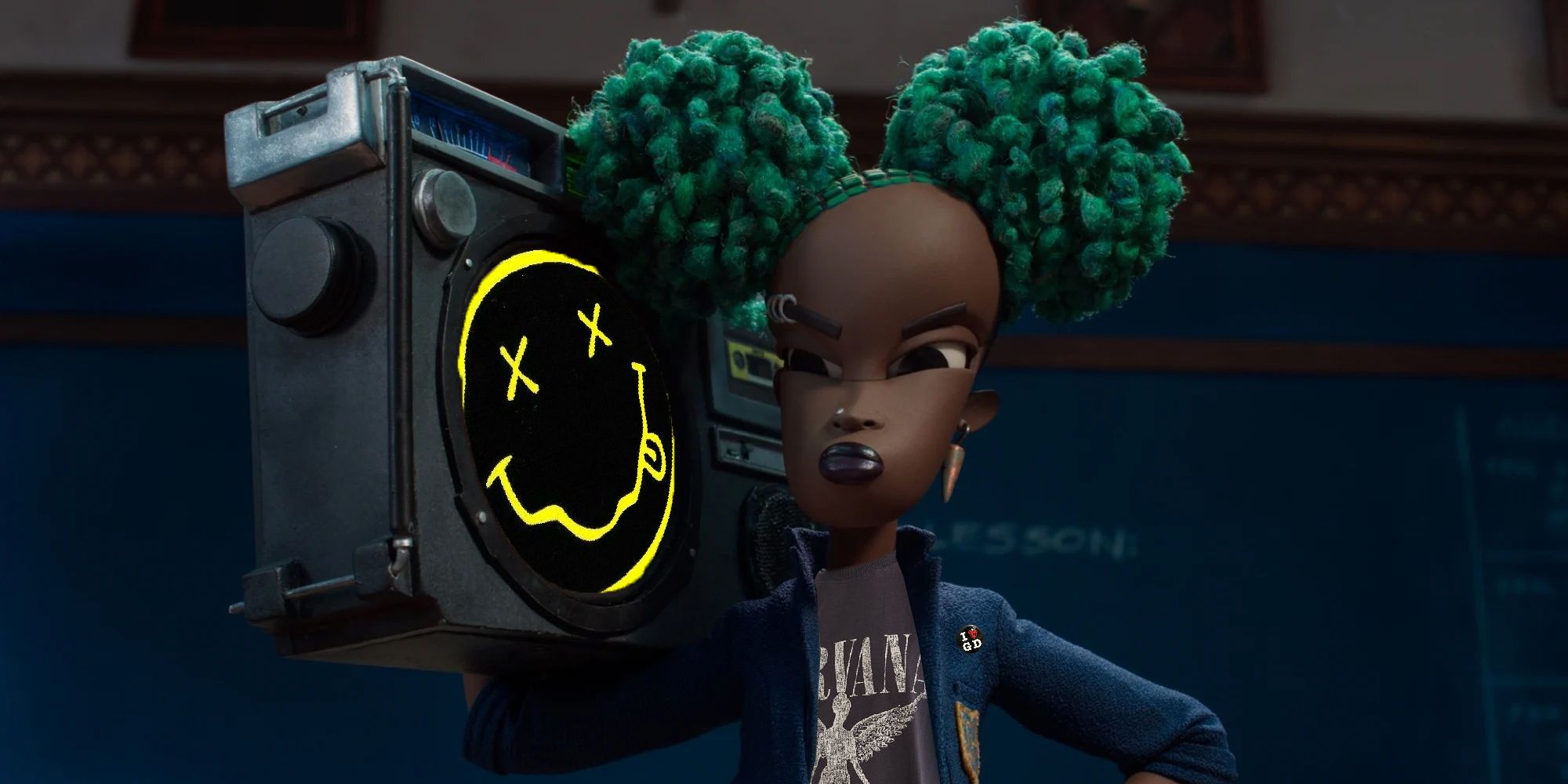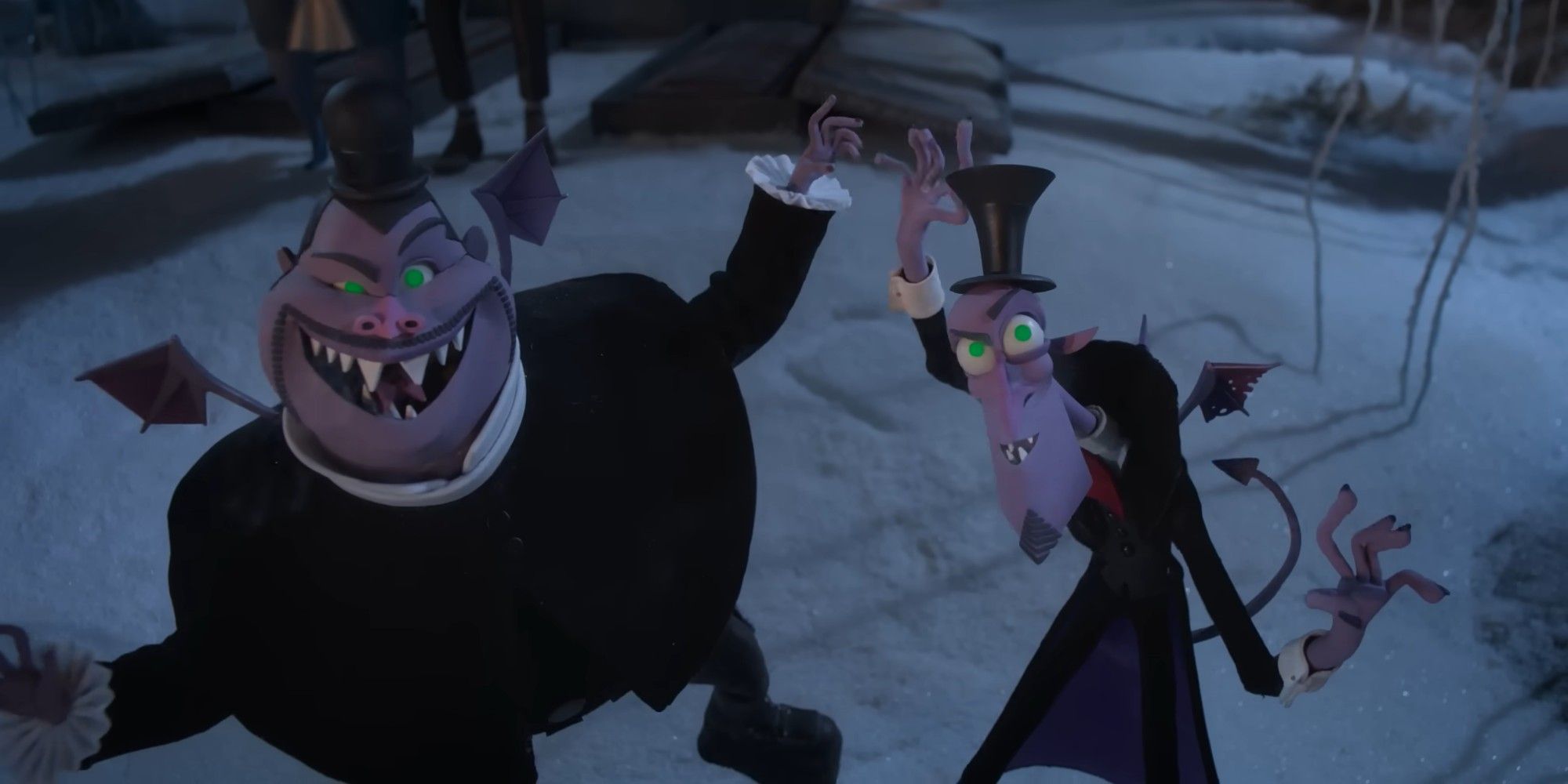This article contains spoilers for Wendell & Wild.
Though Wendell & Wild is named after demonic brothers, the purple pair aren't the Netflix film's villains. The Key and Peele-voiced duo are trouble, sure. One of the film's central conflicts involves them tricking Kat, Lyric Ross' young protagonist, into teaming up with them with the promise of resurrecting her parents who were killed in a car crash shortly before their root beer burned down. But, the slacker imps just don't have it in them to get up to any real evil. When we first meet them, they're getting zonked on the magic hair cream they use to resurrect their father's dying follicles. They may be naughty by nature, but they aren't all that bad.
No, in director Henry Selick's first feature film since Coraline, the real villains are the rich. Lane and Irmgard Klaxon, a wealthy couple who run Klax Korp, a private prison company, want to bulldoze the town of Rust Bank and transform it into a sprawling new prison.
Wendell & Wild feels quite modern, especially in its casting and the specifics of its horror comedy story. As opposed to the predominantly White casts of animated films past, Wendell & Wild is much more diverse with Black actors (Keegan-Michael Key, Jordan Peele, Lyric Ross, Angela Bassett, and Ving Rhames) in five of the lead roles, prolific Chinese American actor James Hong as the head of the local Catholic girls' school, and trans Latino actor Sam Zelaya as Raul, a trans Latino classmate of Kat's.
The choice of private prison entrepreneurs as the villains feels similarly modern. The film takes a stance against private prisons specifically, but also highlights the problem with the prison system as a whole. The Klaxons' daughter, Siobhan, points out that their prisons don't do anything to rehabilitate their prisoners. This subject matter feels fitting for a film released two years after the death of George Floyd and the summer of Black Lives Matter protests that it inspired. That movement pushed millions of people to reconsider the societal role of policing and incarceration, and Wendell & Wild feels like a reflection of that changing culture. Peele is a producer and co-writer of the film and, given that his work has often found the horror in racial and societal injustice, Wendell & Wild feels like it could have only been made now, when a Black creator has risen to Peele's level of prominence.
Despite how much of Wendell & Wild feels current, the way that the Klaxons are taken down feels like a relic of the pre-Trump era, in which Americans still generally believed that simply finding sufficient evidence of wrongdoing was enough to bring down the unrighteous. By resurrecting the workers who were killed in the root beer factory fire (thanks magic hair cream!), Kat and co. have eyewitnesses that can prove the Klaxons were responsible. The cops show up, arrest the Klaxons, and the town is saved! Meanwhile, in the real US, all the elite have to do to live through a scandal is pretend there is no scandal. The Klaxons could simply have said that the ghosts were lying, and that probably would have been enough.
This is a family film, so it isn't surprising to see things get simplified. But, when the villains are so close to the ones we face in the real world — rich ghouls getting rich on the immiseration of the poor — the disconnect feels more noticeable than when, say, the evildoer is a supervillain intent on halving the universe's population or a powerful wizard allied with a fiery eye. Wendell & Wild gestures at the systemic reality of oppression, but the decisive (and carceral) solution it presents is a little too neat and tidy for a film about the evils of private prisons.


